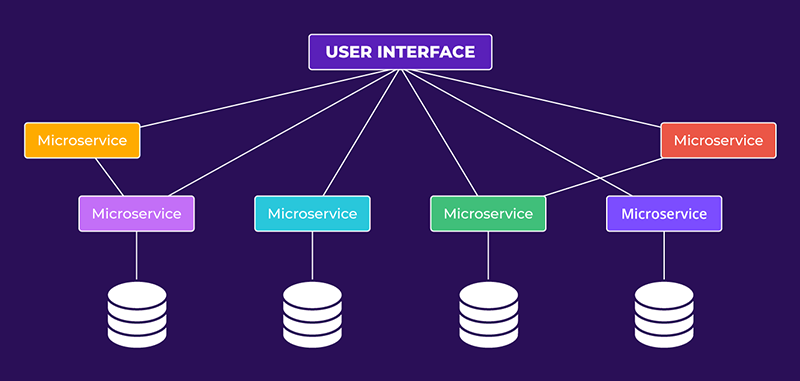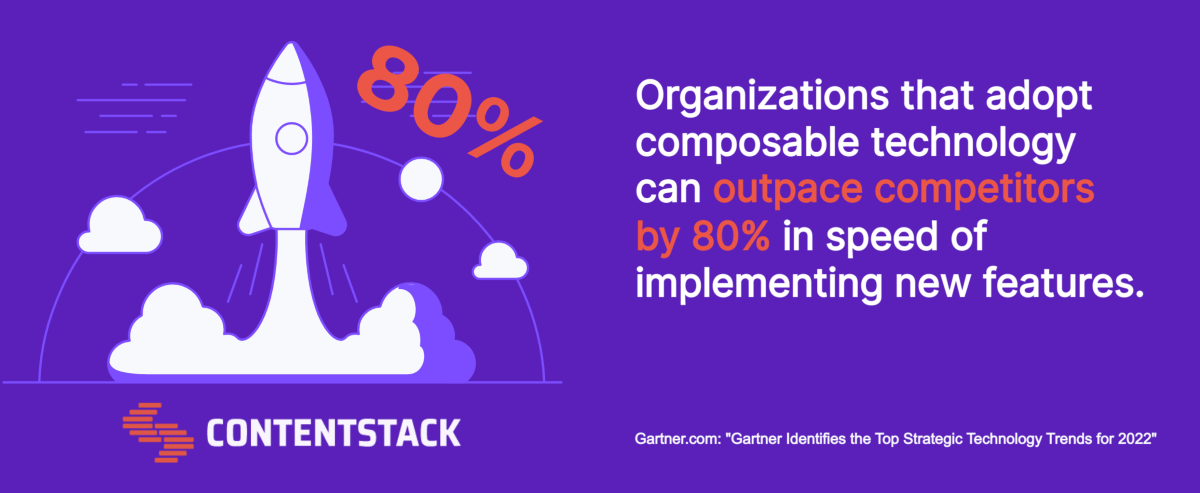What is composable technology: Benefits and components

The future of business is composable technology. This approach allows for flexible, modular software solutions, fostering business agility and innovation. Schedule a demo today to enhance your business operations, scale your business and stay ahead of your competitors.
Highlights
You’ll learn how to:
- Optimize user experience: Composable technology allows businesses to adapt to changing customer needs, increasing customer engagement and loyalty.
- Increase adaptability: With the ability to quickly modify components, businesses respond to market changes, maintaining a competitive edge.
- Promote scalability: The modular nature of this modern technology accommodates fluctuating demands without extensive system overhauls.
- Accelerate time-to-market: Composable technology enables faster product or service launches, fostering innovation.
Discover the power of composable technology today and secure your competitive advantage.
Keep reading to learn more!
Imagine bringing together different components like building blocks and assembling them to create scalable and flexible software applications.
Is this achievable?
That’s where composable technology comes in. Composable tech helps you break down complex systems into reusable and manageable components. As a result, you develop a modular ecosystem where every component performs a specific function. You can assemble different components to create applications that meet your business requirements.
Did you know that 70% of companies will focus on a composable approach for new application planning? This makes the future of composable tech bright.
Before understanding the role of composable technology in redefining business, let’s first understand the definition of composable technology.
What is composable technology?
Composable technology is an architectural approach to creating a business infrastructure like a system and software solutions with independent or changeable building blocks. Developers can easily assemble or reassemble these components to create customized systems or software solutions.
Companies using composable tech like Contentstack bring flexibility, agility, and transparency. Today, companies adopt a composable approach to quickly adapt to changing business dynamics.
A composable business can integrate new technologies without overhauling the entire IT ecosystem.
Key components of composable technology
The four main components of composable technology that help you build a dynamic and adaptable business model and ecosystem are:
Modular approach
Composable architecture applications are composable, allowing you to change the system without affecting other business processes or operations. This scales your businesses and helps you change the tech stack based on the market demands.
API
An application programming interface or API is a medium for software components to communicate with one another. These components exchange data using APIs regardless of the platform, programming language, or hardware. Also, developers can mix and match components from different resources without considering the vendor or technology stack.
Microservices
Microservices are small and independently deployable services. These services work together to create a larger application. Because of these components, a composable architecture is modular, helping you update and scale individual software components.

Cloud computing
Typically, with composable solutions, businesses use the power of cloud capabilities to eliminate the need for infrastructure or hardware. Cloud computing is essential because it offers on-demand and flexible access to cloud-based computing resources. This makes building personalized and customized applications cost-effective.
Composable technology vs. traditional IT systems
Traditional IT systems are rigid, tightly integrated, and challenging to update or scale. These systems resemble a monolithic architecture. As a result, any changes made to the front end impact the back end and vice-versa.
In comparison, systems built on composable technology act as Lego blocks. You add, remove, and rearrange with little disruption. With composable tech, you can change your tech stack, remove obsolete technology, and add new functionalities.
Start your free trial with Contentstack today. Transform your brand's digital presence with Contentstack's open MACH architecture and industry-leading technology. Witness a significant reduction in publishing and development time, and elevate your content management. Start your free trial now.
Benefits of composable technology
These composable technology benefits help your business and customer experience reach new heights:
Ensures a constantly evolving user and digital experience
Using composable technology, you constantly optimize your user experience and digital offerings. This helps you meet the customers' changing needs and preferences. When you deliver personalized digital experiences, you foster engagement and loyalty.

Makes your business more adaptable
Composable technology helps you respond to market changes and readily fulfill customers' expectations. You can quickly change and rearrange modular components, helping you respond to new demands. This reduces the risk of obsolescence and ensures you gain a competitive edge.
Ensures your business is more scalable
The modular nature of composable technology allows you to scale up or down certain functions. As a result, you accommodate the fluctuating demands. You can efficiently allocate resources and meet the changing business needs without extensive overhauls to your existing systems.
Faster time-to-market
Composable technology can install or change modular components, leading to faster time-to-market for new products or services. This flexibility allows you to seize potential marketing opportunities, meet customer demands, and maintain a competitive advantage.
Composable technology reduces development cycles and allows rapid prototyping. This promotes innovation, helping you bring your ideas to the market faster.
Let’s understand how composable technology is helping companies with faster time to market.
How did Contentstack help Sky increase its speed to market?
Contentstack brought a welcome change in how Sky builds and manages its websites. Nontechnical editors can quickly create secure, compliant, branded websites using modular blocks and a custom stack management tool. This solution allowed Sky to increase speed to market, provide creative freedom to content editors, and optimize developer resources.
Developers can build a website in 2 days compared to the earlier time frame of 2 months. Sky has launched multiple websites with reduced development time. This has helped them maintain consistency across platforms.
After using Contentstack, Oliver Cavanagh, Lead Developer at Sky, said:
“Sky as a company is so fast-paced. Every few months there is a new initiative or a new product. Before we launched Sky Websites, development teams became a bottleneck. Now, they enable any stakeholder to make changes to any website, at any time, and without needing technical knowledge to deliver an excellent outcome.”
Read the entire case study here.
Offers digital transformation support
By breaking down silos and fostering collaboration, composable business architecture accelerates digital transformation initiatives. It prepares you for a dynamic approach to software applications. You can release updates and improvements without affecting the functionality of your entire system.
Fosters business innovation
Composable architecture keeps you at the center of innovation, helping you meet the changing business needs. You build an environment encouraging experiments and iterations, leading to effective software solutions and strategies.
Contentstack: Your partner in scaling digital experiences. Twice named a Leader in Forrester's composable DXP award, Contentstack offers an innovative approach to DXP. Experience our 100% microservices architecture and API coverage that allows instant scalability. Start your free trial today.
How composable technology enables business agility
Leaving static and inflexible software solutions and moving to agile, flexible, and new solutions sets you apart from others. Adopting composable technology is no longer an alternative but a must for companies looking to become future-ready.
When you break down traditional silos, you automatically adopt a culture that respects business agility. This shift leads to an adaptable and sustainable infrastructure addressing constant challenges and opportunities of digital transformation, enabling business agility.
When you embrace composable business architecture, you place yourself as a pioneer in your industry.
How to build a composable business with composable technology
Building a composable business starts with recognizing the importance of composable technology in redefining the nature of modern enterprises. Use these steps to build a composable business model:
Assess your current capabilities
You identify areas that lack flexibility by assessing the current state of technology, processes, and workforce. Using composable technology, you can address these bottlenecks. When you understand your existing infrastructure's pain points and challenges, you can easily optimize your operations and drive innovation.
Develop your vision and strategy
The next step is to develop a clear vision and strategy for your composable business model. It involves identifying your core capabilities and potential of composable tech and aligning them with your overall business objectives. This helps you understand how to leverage technology to drive innovation and gain a competitive edge in the market.
Establish a composable architecture
Shifting towards a composable architecture is a key aspect of composable technology adoption. It involves breaking down applications and services into smaller, independent modules that you replace or rearrange. By leveraging APIs, your software solutions become more scalable and flexible.
Cultivate an agile mindset
Composable technology requires you to adopt an Agile mindset. Cultivating an environment that encourages innovation and empowers your workforce to welcome the new change wholeheartedly is essential.
Invest in technology
Selecting the right technology stack, including cloud-native platforms and advanced data management and analytics tools, is essential. These advanced data analytics tools help you collect valuable insights from data. As a result, you make data-driven decisions and develop new avenues for growth.
Focus on iterative implementation
Implementing changes repeatedly allows for periodic assessments and adjustments. You closely monitor the progress by breaking down the implementation process into smaller, manageable steps. You can identify potential issues early on and make necessary adjustments to optimize the outcome.
This iterative approach ensures continuous improvement and helps you adapt to evolving requirements and market dynamics.
Create a partner ecosystem
Composable technology builds and customizes your solutions while encouraging you to establish strong partnerships with third-party services.
You no longer have to develop everything in-house when you use existing expertise and resources through strategic collaborations. Besides saving time and resources, it allows you to tap into a broader range of specialized technologies.
Monitoring and continuous improvement
Creating key performance indicators (KPIs) is essential to measure the effect of composable elements. Regular monitoring of these KPIs provides useful data regarding the performance of your composable elements. This iterative process helps you adapt and evolve, ensuring you stay agile and responsive to changing market dynamics.
FAQs
What is composable technology?
Composable technology allows you to create and optimize digital systems through changeable, modular components. These components provide specific functions. You can assemble various components to build complex but agile and adaptable applications.
What does composable mean in IT?
In IT, composable refers to the ability to select and assemble various software components and services. This helps you create applications that quickly adapt and scale as per the requirements. This ensures that IT systems are flexible and responsive to changing customer and business needs.
What are composable applications?
Composable applications use a modular architecture. You combine different components or services to create an application. As a result, these applications are more resilient, flexible, and easier to update. You can improve or replace components without impacting the overall system.
What is an example of composable architecture?
Examples of composable architecture are the microservices architecture used by streaming platforms like Netflix. Netflix's microservice handles different platform aspects, such as user profiles, content recommendations, and video streaming.
Learn more
Businesses today cannot overlook the power of composable technology because it redefines your agility, fosters a culture of innovation, and delivers superior customer experiences. Your company can benefit from the vast opportunities that composable systems provide.
Do you want to maximize your ability to create, adapt, and grow? Schedule a demo with Contentstack to build your software solutions and systems on composable technology.
About Contentstack
The Contentstack team comprises highly skilled professionals specializing in product marketing, customer acquisition and retention, and digital marketing strategy. With extensive experience holding senior positions at renowned technology companies across Fortune 500, mid-size, and start-up sectors, our team offers impactful solutions based on diverse backgrounds and extensive industry knowledge.
Contentstack is on a mission to deliver the world’s best digital experiences through a fusion of cutting-edge content management, customer data, personalization, and AI technology. Iconic brands, such as AirFrance KLM, ASICS, Burberry, Mattel, Mitsubishi, and Walmart, depend on the platform to rise above the noise in today's crowded digital markets and gain their competitive edge.
In January 2025, Contentstack proudly secured its first-ever position as a Visionary in the 2025 Gartner® Magic Quadrant™ for Digital Experience Platforms (DXP). Further solidifying its prominent standing, Contentstack was recognized as a Leader in the Forrester Research, Inc. March 2025 report, “The Forrester Wave™: Content Management Systems (CMS), Q1 2025.” Contentstack was the only pure headless provider named as a Leader in the report, which evaluated 13 top CMS providers on 19 criteria for current offering and strategy.
Follow Contentstack on LinkedIn.





.svg?format=pjpg&auto=webp)
.svg?format=pjpg&auto=webp)
.png?format=pjpg&auto=webp)






.png?format=pjpg&auto=webp)


